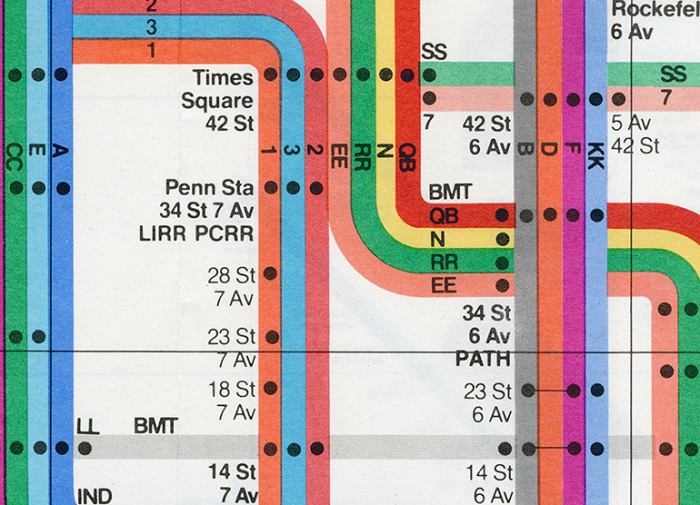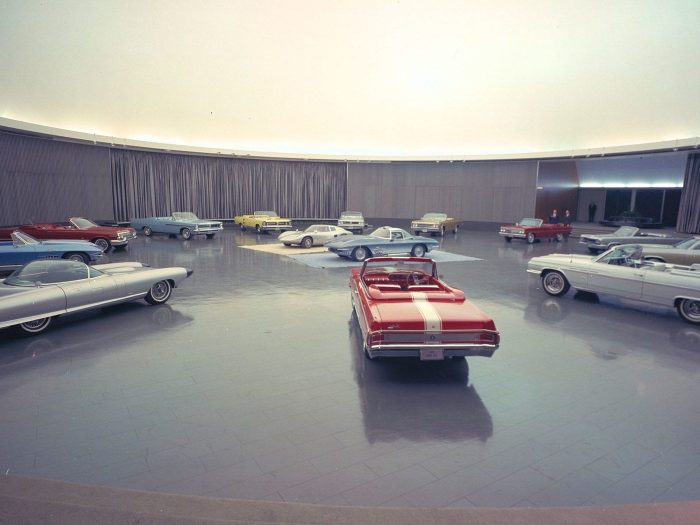For something to become a scientific law, it must be rigorously tested and repeatedly observed. Once it’s established as law, we can count on that phenomenon to occur across all types of conditions.
Marketing has its own set of laws: The Four Ps, find your unique selling point, lead with value, focus on the customer, and keep it short, because our attention spans are now shorter than that of a goldfish.
Most of these were developed over decades of trial and error, and most of us rarely question their origin or veracity.
But there’s a big, scaley problem with one of those supposed “laws” I mentioned above.
The “Goldfish” one; It’s not true. It has no basis. It’s seemingly pulled out of thin air.
It’s a load of carp.
(See what I did there?)
If you’re unfamiliar, the idea is that the internet is causing our attention spans to shrink, and they’re now only 8 seconds long, which is (supposedly) shorter than a goldfish’s attention span.
This claim, which can be found in reputable publications all over the internet, is built on evidence that is at best shaky, and at worst completely fabricated. It relies on assumptions that cannot be safely made, and falls apart under the most basic observation.
Think about it. If our attention span is really 8-seconds, how are Netflix binges a thing? How was the hit of the summer a 45-minute long music video? Why are more people spending longer hours playing video games?
If this whole goldfish theory is true, none of those things would be possible.
Where did this fluffy fact come from, anyway? How was it measured? Who floated this idea first?
I had to put on my internet archaeologist hat on and dig deep for this one, but the answers I found should teach us all an important lesson about proper citation and skepticism as content creators.
What Is a Short Attention Span Anyway?
Various versions of this claim can be found all over the internet, ranging from respected publications to fly-by-night blogs. It’s been seen in Time magazine, Marketplace, and The New York Times. Marketing blogs have been particularly fond of the goldfish tidbit. And why not? It’s just too juicy to pass up.
Marketers are in the business of getting attention, and it sure seems like that’s getting harder and harder everyday, right?
The problem is, once you start following the citations (and I use that word lightly) on these marketing blogs, things start to fall apart.
For starters, what does “attention span” even mean? Are we talking about sustained attention to a task, like watching a movie? Shifting attention, like browsing a social media feed? Or the ability to block out distractions and focus, like I’m doing while writing this article?
“Attention span” is not a concrete state-of-mind that we can throw a blanket definition over. Moreover, it’s certainly not something we can make an apples-to-apples comparison to with a fish. I’m sure a goldfish can focus on food for longer than 9 seconds (big deal, fish, so can I), but a Stranger Things marathon? C’mon now.
Most of the major publications covering this topic cite a study from Microsoft published in the Spring of 2015. Sure enough, interest in the topic topped out on Google Trends in May of that year.

Shockingly, many of these publications fail to link the actual study for readers to inspect. But if you look at the original report, you’ll find it came from Microsoft’s Canadian Advertising office.
There are certainly things to critique about the study. It’s not peer-reviewed. The authors aren’t named. Details about the procedure are scarce. Metrics are not clearly defined. Not to mention, the whole thing is funded and produced by a company with a vested interest in selling a product that grabs attention. That’s not to say you can’t take any insights from the report, just that everything must be viewed through a certain filter.
But the authors do make an effort to include quantitative data regarding human attention. Though lacking in detail, the report states that an electroencephalogram (EEG) was used to collect data, so there was an attempt to collect data beyond self-reports. They also distinguish between the various types of attention: Sustained, Selective, and Alternating. The report found that heavy social media users are actually better at short bursts of hyper-focus.
There remains one big, glaring problem with citing this report though: it doesn’t actually study the length of our attention span, either presently or historically. Nor does it examine a goldfish’s ability to pay attention to… well, anything.
It does, however, include a chart containing the claim that human attention spans are shrinking and are now shorter than a goldfish’s!
That figure wasn’t actually based on data from the report. This information is drawn from another source, which we can see at the bottom of the page: “Statistic Brain”
That’s it? No study title, author, year, or link? That’s not a proper citation. Somewhere, a college professor is crying.
A quick Google search pulls up the page where this statistic was retrieved (I assume?).
Do you see the problem here? Again, we have no links to back up where these figures are being pulled from. As best as I can tell, the “Attention Span Statistics” table on top is being attributed to the bottom section, where it lists sources as the National Center for Biotechnology Information, U.S. National Library of Medicine, and The Associated Press (though again, we have no author, title, year, or link).
It’s not even clear which of those 3 publications is being cited for the 7 stats listed in the table.
To get a rough idea of when this page first appeared on Statistic Brain’s website, I plugged the URL into the Internet Archive’s Wayback Machine. The oldest version of this page was saved back in February of 2012. Back then, the page only cites “The Associated Press” as a source for the statistics. The study included in the bottom table sufficiently accounts for the internet browsing statistics, but that study includes nothing about historical attention spans (or goldfish).
Attempts to reach Statistics Brain about the source of these figures were unsuccessful.
In order to find the origins of this internet myth, we’re going to have to dig deeper.
Attention Span Research: The Origin
Unsatisfied with those sources, I decided to keep investigating. To learn the origin of this marketing legend, I need to know the very first time it appeared on the internet.
This is easier said than done. People have been using “the attention span of a goldfish” as an idiom for decades, so it’s not like we can pinpoint the first time this phrase was ever used. But what we can do is pinpoint the first time it was used in relation to internet browsing.
Filtering Google results by date reveals the first time a goldfish’s attention span was compared to that of an internet user, and it’s an article about web design from The Guardian dated September 13th, 2000. (It’s a fascinating read that still rings true even today).
From the article:
However, it seems in this context that the author is using it in a figurative sense.
The next mentions come in the year 2002, and that’s where we find the first instance in which the goldfish comparison is stated as factual.
In this BBC article from February of 2002, the unnamed author claims that the “addictive nature of web browsing can leave you with an attention span of nine seconds – the same as a goldfish.”
This statement is not supported by a citation; however, the article does quote an MIT researcher by the name of Ted Selker, who states that “our attention span gets affected by the way we do things.” Selker goes on to state that “if we spend our time flitting from one thing to another on the web, we can get into a habit of not concentrating.”
A few months later, the claim reappears in Synapse, a student publication from the University of California, San Francisco. This article claims that “MIT researchers” claim our attention span is shorter than that of a goldfish.
That said, Selker, whose long career features an impressive list of research on attention and productivity, told me over the phone that he has no idea where the BBC writer got the goldfish statement from, because it didn’t come from him.
“No,” Selker stated flatly. “I have no idea where he got that from.”
And so, we’re led to a dead end. Though it’s been mentioned on the internet for the last 16 years, the claim that our attention spans are equal to that of a goldfish is without support.
And don’t forget: the original statistic in question states that our attention spans have been shrinking since the year 2000. But as you can see, people have been claiming that our attention span is around 8 or 9 seconds long since at least the year 2002.
The Problem with Fake Statistics
On its face, the Goldfish Myth (I think we can safely give it that name now) seems pretty harmless. The idea that the internet and mobile devices have affected our attention spans is certainly plausible, and for all we know, it could be true.
But the point is we don’t know, and stating information as fact when it has no actual factual basis can be dangerous.
“When (these stats) start to be debunked, people start to think that maybe research in general is not reputable,” cautions Jonathan Schwabish, Senior Researcher at the Urban Institute and Founder of the blog PolicyViz. “That leads down a very dangerous road into a world where we’re able to say whatever we want and we’re not required to back it up.”
What inevitably happens with these type of salacious figures is they turn into an endless chain of bad citations within the marketing blog echo chamber. Microsoft cites the poorly cited Statistic Brain page, which sparks Time Magazine to cite the Microsoft study, which causes major marketing blogs to cite Time Magazine, which results in thousands of smaller marketing blogs citing the major ones.
It’s blogs citing blogs citing blogs, and at the end of that chain, there’s nothing but cobwebs. All this leads to sloppy advice that marketers eagerly follow, hanging their strategy on information that has no basis.
It’s not hard to imagine a scenario in which a content marketing team starts dumbing down their content to appeal to their “goldfish” audience. Since the content is shorter and less engaging overall, the time on page drops even further.
“Oh no!” they think to themselves. “It’s getting even worse! Now our attention spans are shorter than a fly’s!”
It’s Time Marketers Held Themselves to a Higher Standard
I imagine just about everyone working in content marketing had to write a few papers in college that required proper citations. Should all that go out the window after graduation day?
You probably don’t need a fully APA format bibliography at the end of every blog post, but checking the veracity of stats and figures and properly linking to the source is just a basic requirement of good writing.
Unfortunately, the Goldfish Myth is far from the only make-believe statistic thrown around by marketing blogs. When it comes down to it, content producers need to be more careful with their research. Whether we realize it or not, we wield a certain power when disseminating information to our readers.
“I think it’s incumbent upon content creators to think about ways in which they can engage their audience,” says Schwabish. “Just because one might believe that we have a short attention span than some sort of fish doesn’t mean that we’re not able to hold attention.”
If we’re not careful, falsehoods like the Goldfish Myth can serve as excuses to produce low quality work. If you assume your audience is just a bunch of fish brains, you’re not going to put the work into making high quality content. But this only serves to cheapen your work and disrespect your audience. Your audience is complex, intelligent, and emotional. Give them something worth paying attention to.
Worse yet, marketing departments have built entire strategies on top of this unproven assumption. They’ve pushed down the quality of their work, made it shorter and “snackable,” desperate to appeal to an audience of fish.
Yet that same audience will watch a 4-hour football game or binge-watch an entire season ofHouse of Cards in a single weekend.
The result has been a wave of low-effort marketing content that floods your audiences timeline, much of it being ignored (see pages 4 and 5). It adds no value to your customer’s life, but we sit and wonder why our content strategies aren’t working.
And that’s not to say that short, digestible content doesn’t have a place in a content marketing strategy. It certainly does. And there is data that suggests internet users decide very quickly whether to continue reading something or not (the Microsoft report sufficiently covers this).
But that’s not because their attention spans are shorter; it’s because their BS-detectors are more finely-tuned. We’ve fed them fish food, and they can smell it from a mile away.



